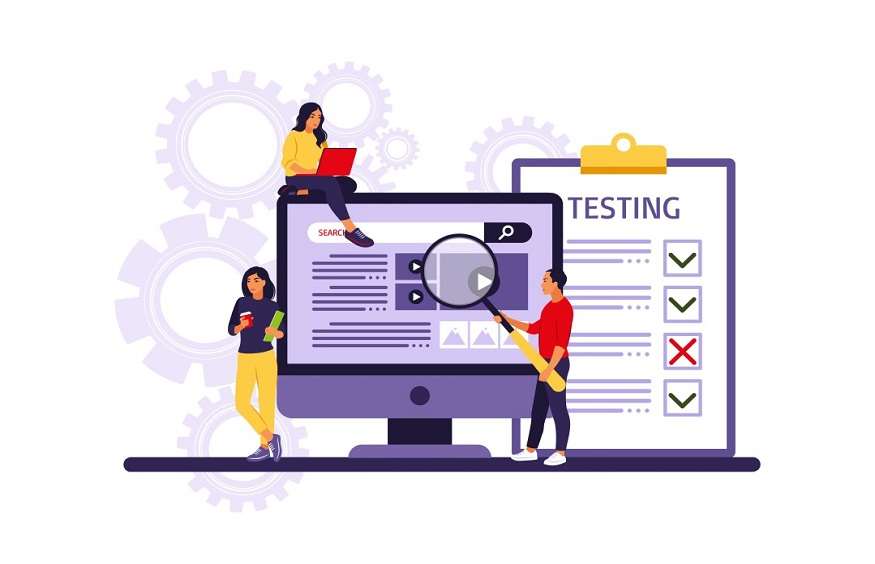 Introduction
Introduction
A/B testing, sometimes called split testing, has evolved into a cornerstone tool for the marketer, developer, or product manager who wants to power his or her campaigns, websites, and applications. A/B testing finds which version works best for whatever element – be it an entire landing page, an email subject line, or the simplest call-to-action button. In the US and worldwide, learning A/B could raise organizational understanding levels on the use of this tool to increase user experiences, conversion rates, and better decision-making. Below is the ab testing definition and a scrutinizing of its core components through specific mind-openers.
All About A/B Testing
Understanding the Fundamentals of A/B Testing
An A/B test is controlled inquiry that seeks two versions of an identical variable to figure out which version works more effectively with the target audience. Normally, the two variants are referred to as “A” and “B” and are shown—only one at a time—to distinct portions of users. For example, a commercial enterprise could run two alternative headlines on its webpage to determine which of them yields more hits. The key statistics to measure performance, based on which was being tested, maybe click-through rate (CTR), conversion rate, or bounce rate. A/B testing is highly data-oriented, which permits firms to make decisions proceeding from evidence that generates detectable improvements in performance.
With the isolation of a single variable in the test, A/B testing strips out the guesswork in the decision-making process, ensuring that changes made on a website or campaign are based on facts but not intuition or preconception. This makes A/B testing one of the most effective strategies for enhancing user engagement and driving desired behaviours.
Significance of Hypotheses in an A/B Test
At the core of every A/B test is a hypothesis—a concretely outlined prediction about how a change will impact user behaviour. For example, for a business that believes just turning one button that triggers a call to action from blue to red colour will mean higher chances of conversion, in such case, the hypothesis is that high conversion rates will result. A carefully crafted hypothesis is important because it provides reasons for the test and it spells out what course of action will be taken. Without a precise hypothesis, the findings of an A/B test might be difficult to comprehend, leading to inconclusive or misleading insights. A/B testing works best when the hypothesis is explicit, quantitative, and pinned on a deep understanding of user behaviour. This is essential, ensuring that the firm is keen on assessing very significant factors likely to bring out an effect instead of doing random or incoherent studies. Refining the hypothesis by proving it through A/B testing, the firm is going to continuously increase user experience and conversion rates.
Establishing Clear Priorities for A/B Testing
Clarity and quantifiability of the objectives are prerequisites for the success of A/B trials and ab marketing. The objective is often put in terms of a particular KPI that indicates what is to be achieved with the test. For example, if the goal is to increase conversions in a newsletter sign-up, then a KPI could be the percentage of visitors who successfully submitted the sign-up form. Therefore, knowing exactly what the goal is enables companies to make sure that their A/B testing is conducted on actually providing real-world results. An established goal will also reduce the potential for misinterpretation when analysing test results. For example, if the aim is to increase the click-through rate on a product page, then the A/B test should focus on that statistic rather than other factors, such as bounce rate and time on the page. This will align the test strictly with the larger goals of the business, ensuring that the results can only dictate the next steps taken.
Randomized Testing and Audience Divisions
One of the primary aspects of A/B testing is that testing has to be randomized for the conclusion to hold absolute relevance. An A/B test consists of randomly splitting your audience into two: one half views the control (Version A), and the other half views the variation (Version B).
This randomization guarantees that the test results are not skewed by external influences, such as the time of day or the kind of user. The groups should be as homogenous as possible in terms of demographics and behaviour to have the groups’ differences clearly attributed to the interventions being tested. Besides randomization, businesses also have the ability to segment their audience in order to obtain more insight into how different groups react to the changes. For example, an A/B test might indicate that a newer design of a website appeals more to younger people while an older demographic better prefers the old layout. Accordingly, organizations can modify their approach based on several segments to customize the approach to different groups of clients, which can translate into better-tailored and successful user experiences.
Analysing the A/B Test Results
Once the A/B test has run for a new space and has captured enough data, it’s time to analyse the obtained results. All this effort is expended to measure whether versions A or B of the test performed better based on the specified KPI. For example, if the test involved two alternative email subject lines, it could consider whether the version resulted in a higher open rate.
A/B testing is considered to be successfully yielding differences by statistical definition: enrichment between two versions that show that the modification made a meaningful difference in user behaviour. It’s really important to understand that not all A/B tests usually come out with a clear winner. The difference may be too slight at some level to show statistical significance, or both may be performing equally well. In such conditions, it becomes a must to read the weaker results carefully and genuinely use them to learn something. Even if the test does not result in immediate changes, the experience gained can influence subsequent test runs and improvements.
Conclusion
A/B testing is a flexible and strong tool that allows organizations and brands to improve user experience and conversion rates, have high converting landing page and make learned decisions based on data. Knowing the baselines in A/B testing, having clear hypotheses, setting pre-defined targets, and reviewing findings carefully enable companies to really run A/B tests to full effect. Companies will stand lithe and very responsive in an ever-changing digital market upon the continuous testing attitude and avoidance of typical errors.





